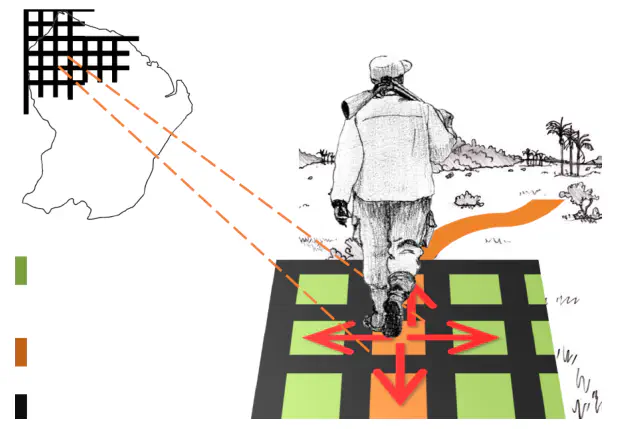MSc internship: Study of the dispersal patterns of hunters: Bioeconomic analysis of hunted wildlife populations on the French Guiana coastline

Author: Cyrus Matboo
Supervisors: Guillaume Salzet, Margot Gradoz, Cecile Richard-Hansen
Abstract: The question of the sustainability of tropical forests is a major issue in the context of climate change. Indeed, despite these area’s small surface, they contribute to the furniture of unique ecosystem services such as diversity storage and carbon storage. However, increasing anthropogenic impacts can modify their dynamics, and can lead them to degraded states. At the Guianese scale, this question appears when we study the consequences of forestry, gold mining and fauna hunting. The forestry is developing here following low impact exploitation methods, on a forest which is currently in a good state of conservation. Nonetheless, undesirable secondary consequences emerge from these “low impact” methods: the extension of the road network inside the woods leads to an increasing accessibility of the exploitable territory to populations that can harvest some resources more easily. Among these resources, we can mention gold mining, or fauna. The risk of an empty forest (characterized by the absence of scatterers) is to be studied, and this risk seems to be paradoxically increased by these harvest methods at the scale of the permanent forest domain. In order to estimate hunting patterns linked with the facilitation of the territory accessibility because of forestry, we quantitatively measured the hunting pressure exerted on the Guyanese territory over time in order to produce defaunation maps. We will use two approaches from the literature: a first model of hunter dispersal on a territory according to its accessibility, based on circuit theory; and a second optimized model of taking decisions and maximizing gains at the individual level. The two approaches are combined in a simulation model, and then calibrated on hunting survey data and animal abundance densities collected by the OFB in previous years. We will show that it is possible to quantitatively evaluate the dispersion of hunters on the territory by circuit theory, and that the studied proxies correspond with the observed large-scale data. After highlighting the possibility of predicting a non-organized hunt, and after discussing the validity of the data and the model, we will suggest a possibility of integrating the model to the planification tools of the forestry industry, in order to increase its long-term sustainability.